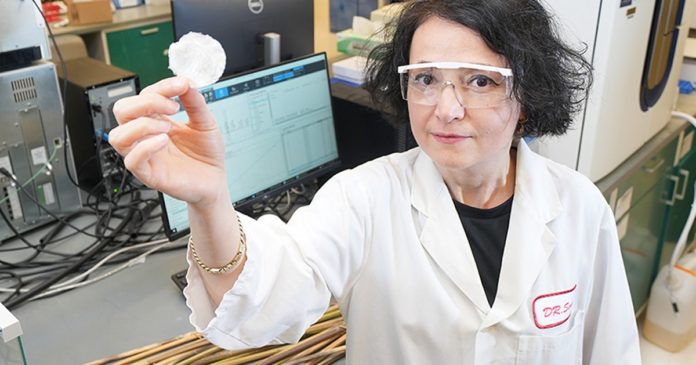Purdue University researchers are developing biodegradable super-absorbent materials using hemp cellulose – and appear to be on a winner.
Super-absorbent materials are typically made from synthetic polymers; mainly polyacrylate-based compounds. For example, sodium polyacrylate materials are used in disposable diapers due to their high absorbency per unit mass. The problems with these materials are significant energy inputs are required to make them and they are made from raw materials derived from non-renewable resources such as crude oil.
The impact of disposable nappies/diapers alone is significant. The World Economic Forum estimates more than 300,000 disposable nappies are sent to landfill or incinerated every minute of every day. 248 million barrels of crude oil are needed for the chemicals to produce the 167 billion disposable nappies manufactured annually, and this results in 38.4 million tons of solid waste.
In an effort to create more sustainable and environmentally-friendly super-absorbent materials for applications such as diapers, the Purdue researchers are using cellulose extracted from hemp, which is a renewable resource that grows very quickly.
The team is led by Senay Simsek, a professor in and head of Purdue’s Department of Food Science.
“We are passionate about the potential of our product to make a significant environmental impact,” said Professor Simsek. “By introducing a commercial product that helps save our planet, we aim to lead the way in sustainable innovation — helping to heal the planet one application at a time.”
Two parts of the hemp plants are being used in her research – the hurd, which is the woody inner core of the plant that is highly absorbent, and hemp bast – the fibrous outer layer – which provides strength and durability.
“The cellulose extracted from these parts is particularly effective because its molecular structure can be modified to enhance its water retention capabilities, making it ideal for products requiring high absorbency,” said Professor Simsek.
Beyond diapers, menstrual pads and tampons, the technology could also potentially be used in water retention applications in agriculture. Another potential use might be for mopping up oil spills.
The team is pursuing further collaborations with industry to bring the hemp-derived super-absorbent materials to market, which will require scaling up the technology to industrial levels. Meanwhile, Purdue Innovates Office of Technology Commercialization has applied for a patent from the U.S. Patent and Trademark Office.


